My grandmother, while preparing sweets and savories for the entire family, used to tell me
that food is something that can be so basic but so lasting as a memory. I never understood it
at that time, as I sat beside her and watched her whip up absolute magic in such a patient
manner.
For our grandmothers, keeping us well fed was the priority and they loved that. After almost
two decades, I finally understood what she meant. For them, it was the women’s job to cook
for the entire family, and they took pride in it. They would stand in front of the stove for
hours, stirring away at homemade Chakki, Naankhattai, and other food that just isn’t made at
home anymore.
For our mothers, taking care of the entire family and work go hand in hand. I crave my
grandmother’s food, but equally appreciate the dishes patiently made by my mom, with the
same amount of love. I think to myself, these are just new memories made for years to
come, as I open my lunchbox to different parathas everyday with homemade pickle! They
perfected the balance between working in the office and kitchen, teaching us invaluable tips
about time management.
Our generation gets a bad rep for not appreciating home-cooked food, but in reality, we all
crave the comfort it gives us. ‘Ghar ka khana and the ‘mother’s touch’ is a cuisine that we try
to replicate in our hostel dorms or apartments. Calling up our moms for the right amount of
ingredients to get the correct taste, and hearing, “Oh, I don’t have a particular measurement,
I just know how much is right” is an all too common answer.
A quick 2-minute ready-to-eat meal might satisfy our belly, but the love and patience with
which our mothers and grandmothers made us our favorite food, is what satisfies our heart.
There is a big generational gap between us but what we need to appreciate are the
sacrifices they have made for us. They’ve gone hungry just to put food on our plate,
metaphorically, and often literally.
This Women’s Day, and in your life, we need to acknowledge and appreciate them for the
love they’ve given us, through food and their care.
Category: Uncategorized
SPROUTFULLY: JOURNEY OF A MOTHER’S SEARCH FOR HEALTHY FOOD
A mother’s heart is an ocean: unfathomable! You can never really determine its depth and purity unless you become one. Be it a newbie Mommy or a 96-year-old Mom with white-haired children, mothers can never really stop caring for their little ones. Today we gonna showcase the story of such a mama bear who recreated the forgotten recipes of the past to shoot up growth and nourishment in her very own baby and continued the chain of goodness by starting up an organic venture to reach out to such Moms who passionately long to have some natural yet nutritional diet for their infants.
Swathi Udhyakumar, the founder of Sproutfully, belongs to South India. When Swathi’s daughter was born, being a first-time mom, she was perplexed about her daughter’s diet. Her daughter was born with reflex which made her intolerant to normal Ragi recipes. Amidst all this nightmare, Swathi’s mother in law shoot in the idea of using the ancient lost recipes made of natural and organic products. And the magic of Nature was done! It worked as a boon for Swathi’s daughter.

After witnessing the exceptional result of those products, Swathi and her husband decided to recreate the forgotten recipes and bring them back to the present era. She performed a plethora of research and analysis about the organic ingredients like grains, legumes, nutrition, etc. Swathi was always intrigued by the practice of Ayurveda and Natural living and that boosted up her zeal to research about the gifts of Nature. After combining, mixing and matching several trials at home, Swathi came up with the best combinations which caters to all age group, beginning from a toddler to an elderly. And that’s how Sproutfully was born!
Once the venture was initiated, the aim was to reach out to the target audience who are in need of such healthy mixes and combos. It is then when Swathi came across ChewDa which not only showcased the products of Sproutfully but also helped it reach to the customer who be beneficiated by it. Sproutfully hones a range of products basing upon age groups and customs. There are health mix, porridge drink, Ganji Mix, etc. Sproutfully’s products can also be used to bake cookies, biscuits, cakes and many more.
Every consequence comes with certain challenges. Starting up and then successfully running Sproutfully was not even easy for Swathi. There are many responsibilities that need to be taken care of. Majority of the customers are infants the quality of the products can never be compromised. However, she describes the experience to be highly knowledgebale and inspiring. She says “Being an Entrepreneur is challenging when you are a mom to a small kiddo. But it has helped to understand that planning is important as everyday of our entrepreneur mom is a planned day to balance life and work.”
Swathi believes that Nutrition should come through food via natural medium that can be drawn from the depth of the Nature.
Zainab Khan: The Activist whose suffering trailed her success story
Zainab Khan: The Activist whose suffering trailed her success story
India is a country where a girl child was considered a liability and not a priced possession. This practice was mostly reigning in rural India where the fate of a woman was restricted to the four walls of a household and an inconsistent amount of labor. Child Labour is an issue that had always been debatable. The innocence and sprouting childhood of young kids have always been at stake. Although numerous policies have been crafted by the Government to eradicate child labor and to preserve the growing age of these kids, there is some portion of India, where child labor is still being carried out.
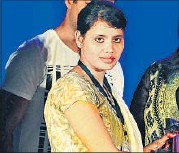
However, on our ongoing Navratri Series, today we have got the story of a young activist, whose journey has played an eccentric role in slowing down child labor and elevating children’s education.
Zainab Khan is a 23-year-old activist who has shaped the educational destiny of the village Chandora. Chandora is a small rural setup in the heart of Meerut, Uttar Pradesh. The small townlet of Chandora was not hosting any school dedicated to the proper education of a girl child. Like other girls in her village, Zainab was a child laborer. She was working in a factory where all the girls use to stitch footballs to earn money to keep up their families. She started working laboriously from the young age of 10. Other girls in her peer labored since the tender age of 5-6. However, the lads of the village were sent to schools to pursue a good education and prosper in life. It was a social stigma that girls are to be shunned to labor for it was all they were destined to do.
Nevertheless, the young spirited Zainab Khan always aimed at breaking the so-called social rite. She was never satisfied with the life, her society was weaving for the young innocent girls of her village.
But like every other classic story, she even experienced a turning point. It was in 2006 when the Bachpan Bachao Aandolan was launched by the Government to exterminate child labour from India. This renowned Child Right campaign trailed into the district of Meerut. And eventually it reached Chandora. As the movement ruled out, the establishment of a ‘Bal Panchayat’ was made obligatory. The Bal Panchayat was to be formed in every village to strengthen the children of the village to prevent themselves from unconsented exploitation and child labour.
The Panchayat had the provision of electing child representatives from among the children of the villages. And to Zainab’s fortune, she was elected as the Bal Pradhan of her village. And since then, she never looked back. That became a landmark junction for little Zainab. In an interview she says that ” Right from the start my objective was straightforward- Tell the children to stop stitching footballs and start attending school. Over the years I have kept up my engagement with the community, persuading parents to send children to school.”
Zainab became the first girl of her village to travel to the nearest city to complete her higher secondary school. The tiny village of Chandora lacked the basic infrastructure of a higher secondary school and that became the dream of Zainab. With a lot of persuasions, Zainab managed to meet the then Chief Minister of Uttar Pradesh and requested him to build up a higher secondary school in Chandora. Her prayers were heard! On the orders of Akhilesh Yadav, the DIOS established a Higher Secondary School at Chandora. Zainab also requested the Chief Minister to meet two girls from each district to learn about the problems they are facing and the ailment they need.
With the establishment of the school, Zainab not only accomplished her vision but also elevated the pursuits of thousands of children brooding at Chandora. Education is a fundamental right of every child and restraining that right evolves not only a legal violation but also the infringement of the basic human rights. She also laid out the foundation of a College in her village so that young lads and ladies wouldn’t have to go far of land to complete their education.
Her determination and perseverance may not have eradicated child labour but has worked efficiently in slowing down the practice. She became the ray of hope for numerous sprouting children of her village. This 23-year girl had renovated the fates of several children.
Zainab’s journey from being a Child labour to an activist dedicated to the cause of Children education is a mirror to the youths out there. She exhibits the power of our Youngsters. This Navratri, we applaud this young soul who turned out to be an inspiration for many.
Jibhabu: Female Entrepreneur of the Medieval Era
Jibhabu: Female Entrepreneur of the Medieval Era
Women are an integral part of our history. Indian Independence couldn’t have been prosperous without the sheer contribution and sacrifice of the Indian women. Patriarchy has been the culture of Indian society where women were shunned because they were considered vulnerable. Decades and decades ago, there was hardly any identity of a woman, except for the few who were fortunate enough to stand on a strong base. But there were a few women, who survived immeasurable miseries and sufferings yet they chose to stand strong and fight all the stereotypical odds of the society. On this ongoing Navratri series of ChewDa, today, we have the story of such an unsung woman. She is the woman who broke all orthodox ideologies and came out strong as a Female Entrepreneur.
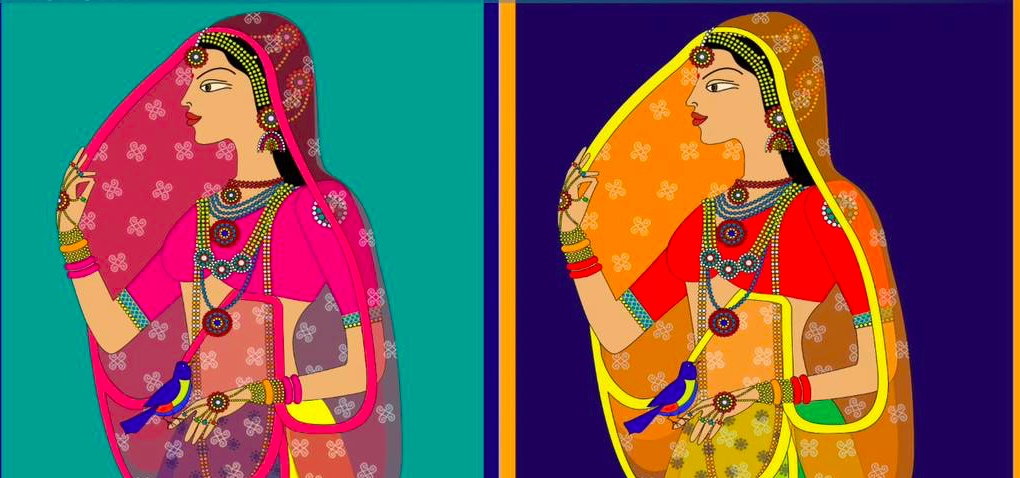
Jibhabu was an agricultural female entrepreneur of the 18th century. It was not easy for her to rise to the position of an entrepreneur. Jibhabu was married to Lallubhai of Baruch, Gujrat. Gujrat had been a city where women handled an indispensable portion of the family businesses. However, the credits never fell on their lap, as the male head of the families would always lead the business.
Jibhabu’s husband, Lalubhai was leading a successful family business of land revenue. The firm was prospering well with the aid and assistance of Lallubhai and Jibhabu. In such kind of business, it was important to have a thorough knowledge of the local conditions and ailments. The firm mainly was involved in extracting revenues from local landowners and thereafter paying it to the Mughal administration. Collecting taxes and extracting revenues was a prominent practice during the 18th- 19th century. Gradually when East India Company took over the Mughals and founded its reign in India, these firms started elevating taxes to the Company itself.
Although Lallubhai was a loyal and distinguished figure, in 1794, he was arrested by the Company on the charges of default in payment of debts. He suffered a lot during his span of Jail and later on passed away in 1799. It was during that period when Jibhabu, the widowed wife of Lallubhai, proclaimed herself as the head of their family business. She asked the Company to acknowledge her as the entrepreneur of their firm. She did not demand the position as the helpless and hopeless widow of Lallubhai. Instead, she believed that she was equally knowledgeable and capable of managing their business. She had learned an abundance of strategies and policies of their firm and this gave her the strength to assert herself as the deserving head.
As the firm was a family-owned business, numerous male members of the family fought and insisted on handling the post of the Karta or the head. However, Jibhabu was inferred on her determination and will power. The male members of the family were not the only ones who were against Jibhabu’s decision. It took a lot of petitioning and diligence to convince the East India Company. After several persistence, the authorities of the Company were convinced that she had equal expertise and aptitude to successfully carry on their family business of land revenues. Furthermore, she also managed to procure the estates which belonged to her husband, that the company had illegally confiscated.
During the 18th century, when women were hardly allowed to contribute to a family business or decision, Jibhabu rose against all the stereotypical odds and became an acknowledged agricultural entrepreneur of her times. She not only became a landmark in the history of India but also turned out to be a benchmark transition in the family business tradition of India. This Navratri, we salute Jibhabu, for her unconditional patience and perseverance.
Her story is hardly known to people out there, but truly it will inspire numerous women. She successfully paved the fog of patriarchy and rose like a powerful sun.
Aditi Deodhar: The woman who renewed Dried leaves
Aditi Deodhar: The woman who renewed Dried leaves
Today environmental degradation is an issue which has got no boundaries to talk about and work for. In the current times when the flora and fauna are suffering extensively, our Woman for the day has started up a venture to give back to nature what it bestows us with. Little perplexed right! Today, on the ChewDa Navratri series we gonna celebrate Aditi Deodhar, the founder of Brown Leaf. During the falls, our surrounding gets carpeted with dried brown leaves. Be it the porch of our home or be it the lanes of our colonies, dried leaves cover them up. And what we do is sweep them, pile them up and set fire to it. But Aditi Deodhar, who is an IT consultant by profession, got compassionate about those lifeless dried leaves and strived to end the above-said practice.

Aditi Deodhar, a PhD in Mathematics, belongs to the city of Pune. She was very much concerned about the dried leaves that encapsulate the lawns, gardens, streets, mostly in the urban cities. Initially, she restricted the sweeping ladies to burn up the dried leaves in her locality. But after a few months, when the heap of dried leaves became a concern of public resentment, she came up with an idea of reusing these dried leaves. Soon Deodhar came across an Urban Cultivator named Sujata, who was in need of dried leaves to form compost for her small gardening endeavours. It is then when she thought of forming a forum which could stop the burning of dried leaves and initiate the reuse of the same.
In November 2016, Aditi Deodhar founded Brown Leaf, a website which aims to prevent the burning of dried leaves and reusing them by mulching or composting. By April 2017, Deodhar and the members of Brown Leaf could save up around 5000 gunny bags of dried leaves. In this website, the team is educating people about the uses of dried leaves. Fallen dried leaves can be used for mulching, composting and a lot more. The website Brown Leaf acts as a medium for the ones having the heap of dried leaves and the one who need that dried leaves. Within no time, this easy yet ingenious idea got flame. The people who would receive the dried leaves started sharing pictures and stories of their gardens and its yieldings. This turned out to be a humungous turning point for the incentive. More and more people started collaborating with the website through a WhatsApp group. The ones having the stack of dried leaves donated it to the ones who needed that dried leaves.
Deodhar’s initiative not only revised the fate of those dead dried leaves but also transformed the ideologies of people. The ones who were considering the dried leaves simply a waste product to dispose of started referring it as Brown Gold. After witnessing the successful results, people started composting those fallen leaves and using it instead of soil. The outcomes were productive. This ingratiated more donors and receivers. Now the website also holds courses to train people about recycling this brown gold and use it for mulching or composting.
In one of Aditi’s interview, she said that ” There is no concept of Waste in nature, it is only in the urban tracts we have come up with this concept. Trees shed leaves during the fall to conserve water. Now the dried leaves forms a protective layer in the soil which retains moisture throughout the summer.” She believes that the environment shall guide our paths to protect it. We can protect nature by recycling the products we have been bestowed by Nature itself. With this principle in mind, Aditi Deodhar has set up an example that a simple idea can result in humongous outcomes. This software-based environmentalist has also set up another forum called Jeevitnadi, which aims to cleanse the river water which is being polluted via the actions of humans.
This Navratri we celebrate the will and intentions of Aditi Deodhar, who has taken up a small yet elusive stride to preserve our degrading flora.
Malati Murmu – The Editor of the only Santali Newspaper ‘Fagun’
Malati Murmu – The Editor of the only Santali Newspaper ‘Fagun’
India is so diverse with its cultures, traditions, and languages, and Indian women have been at the forefront of this cultural identity. However, they aren’t given enough credit for it. With the onset of Navratri, ChewDa hopes to empower these uncelebrated women! With English and Hindi increasingly becoming the common medium language of communication all over the country, even government schools have shifted their focus from local languages to these. It’s not a wrong step, but it’s equally important to sustain and preserve the legacy of the different tribal and local languages of India. That is where our woman superhero, Malati Murmu, and her initiative, Fagun, come into the picture!

Malati Murmu is a Santal tribal woman from the Mayurbhanj district of Odisha. It’s important to note that tribal women are often not encouraged to take up a career path like this, but Malati’s enthusiasm had no end. She knew the importance of learning mainstream languages but according to her, you can express yourself best in your mother tongue. Seeing the upgrade of tribal languages like Santali, Bodo, Dogri, and Maithili to official languages in the 8th schedule of the Indian Constitution, Malati got an idea. She decided to publish a monthly newspaper in Santali, her native language. ‘Fagun’, first published on April 9th, 2008, is the only official Santali publication. Malati hails from Mayurbhanj and has done her matriculation in Santali. She is the chief editor of Fagun too.
Santali has approximately 7.6 million speakers worldwide in 2020, as compared to 8.7 million in 2011. It’s not considered an endangered language yet, but the numbers have shown a decline. Yet, the members of the community didn’t have a prominent publication they could turn to, which would bring them the daily national, local, and regional events. That’s where the idea of Fagun popped up. Even though she did have trouble with finding investors and financing a newspaper, she didn’t give up hope and reached out to prominent members of the community from all over the country.
“While I don’t deny the fact that it is important to know other, more mainstream languages to do well, one need not completely lose touch with one’s mother tongue. I feel it’s important for Santali people to ensure that their children are familiar with our literature, culture, and traditions. So the monthly paper’s content is engaging. Apart from regular news items and editorials, you will find articles, short stories, poems, a special section for women and children, and a section on events.” – Malati
The inaugural print of Fagun had a mere 500 copies, but it has now reached up to 5,000. It finds its readers from all over the country, from states like Odisha, Delhi, Maharashtra, West Bengal, Assam, Jharkhand, to Tamil Nadu, Andhra Pradesh, Kerala, and the Andaman and Nicobar Islands too! Being a tribal woman of Santal, she did have to take help from her husband to start the newspaper off. She explains Fagun as a monthly newspaper that is designed to preserve a language and give her diverse audience a rundown of everything prominent happening in the Santhal tribe, other tribes, and their fight for survival in this era of modernism.
Murmu, in an interview about the contents of her newspaper, said, “While I don’t deny the fact that it is important to know other, more mainstream languages to do well, one need not completely lose touch with one’s mother tongue. I feel it’s important for Santali people to ensure that their children are familiar with our literature, culture, and traditions. So the monthly paper’s content is engaging. Apart from regular news items and editorials, you will find articles, short stories, poems, a special section for women and children, and a section on events.”
On the uniqueness of Fagun, she says that she publishes a lot of short stories, women’s pieces, and highlighted events. A lot of tribes often share their stories or events as well, and she tries to publish them as much as she can because the entire idea is to promote a community. Her thoughtfulness and initiative should be celebrated and invested in. According to an interview, she does hope that the Government of Odisha offers investments or assistance to Fagun to save this tribal newspaper. This Navratri, we celebrate Malati Murmu and other women like her, who want to bring a change, and do so as much as they can!
This is an article from our Navratri: Celebrating the Indian women series.
Smt Sita Devi Yogendra – The first female yoga guru
I grew up in a family where women have made things happen with or without men. And that enlighten me with the verve and enthusiasm to live a life irrespective of my gender. Well, our Motherland India has generated many women who have contributed their existence to the service of mankind and the upliftment of females in our society. However, many of them remained uncelebrated. So this year, with the Onset of Navratri we at ChewDa are going to applaud some of the unsung women of India.
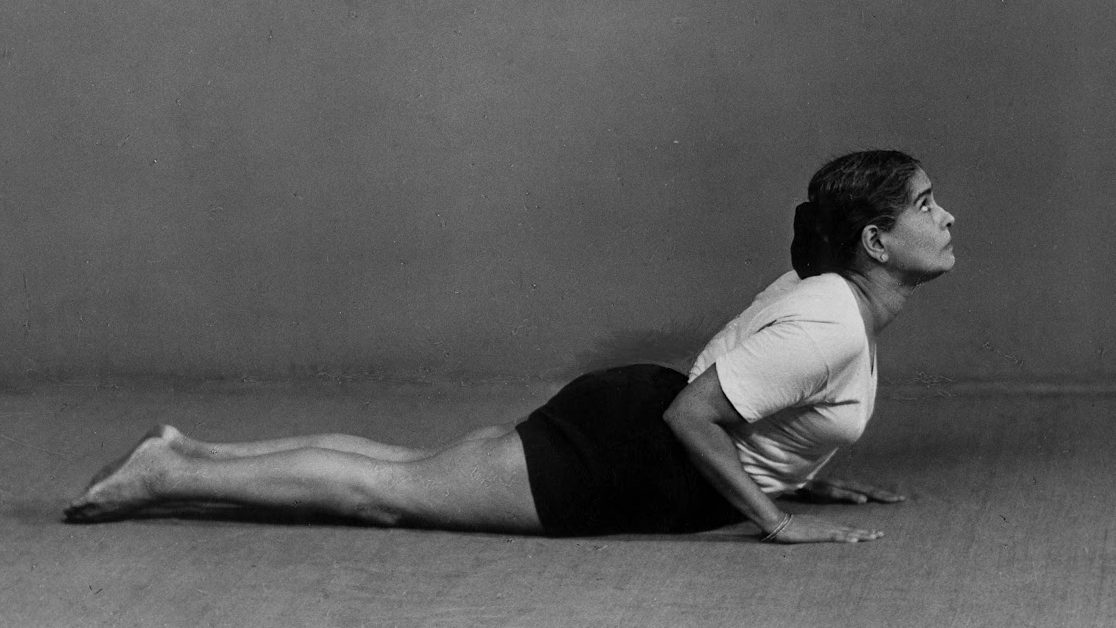
On the commencement of the Navratri, the woman that we are going to remember is Smt Sita Devi Yogendra. She is the pioneered Yoga for Women. Initially, Yoga was a practice specifically accustomed to men but with the dedication and unswerving sacrifice of Smt. Sita Devi, women were introduced to the divine pursuit of Yoga. Sita Devi was born on 1st June 1912. In September 1927, she tied the nuptial knot with Shri Yogendraji. Yogendraji is regarded as the pioneering head of The Yoga Institute in Santacruz. Sita Devi was introduced to the practice of Yoga after her marriage and within two years of marriage, Sita Devi had acclaimed ample skills and perception about Yoga. Soon she became the mother of two boys. She very well balanced the personal life as a homemaker and competent life at The Yoga Institute. Sita Devi worked as the Secretary-Treasurer of the Institute and was heading the lady’s department.
Sita Devi had contributed her perception and learnings about Yoga in many journals over the years. She had also inscribed articles for the journal of the Yoga Institute and certain International Journals. While writing articles, she started teaching Yoga to women and children in the institute itself. In her lifetime she had handled more than 5000 cases which were penned by her in one of her books. All her knowledge and understanding of Yoga were heeded as appropriate by medical professionals. She had achieved immeasurable knowledge about the science of Yoga, personal health and self-improvement.
She believed that Yoga is a universal pursuit and hence shall not hold any gender prejudice. According to her both men and women should practice Yoga as nowhere it is engraved that Yoga is restricted to women. In one of her speeches, she had said that Yoga authorities even allow a prostitute to practice Yoga. Sita Devi speculated that although men and women have their psychological and physiological differences, the purpose of Yoga remains the same for both genders. With her years of learning and experience, she had found out that even Modern age women would need Yoga for their physical and mental health. She had written several books and articles which speak about women and their need for Yoga.
No doubt Sita Devi was convened as Mother. She was an epitome of love, care, and sacrifice. All her students and followers admired her for her irresistible service towards them. Her assistance in making Yoga a part of Indian woman’s life is to be cherished for years to come. Mother Sita Devi departed in 2008 at an age of 97. Her unswerving dedication and service towards Yoga have cleared up paths for women and the improvement of their spiritual and physical health. Her unparalleled service for improving health has raised the curtain of physical education in India. This Navratri, we bow down to Mother Sita Devi Yogendra, whose contribution has transformed lives.
This is an article from our Navratri: Celebrating the Indian women series
Murukku – The Perfect Spicy Spiral
Call it Murukku or Chakodi (The Andhra variation), you know it’s the perfect fried finger food apart from Nimki. As far as I remember from my childhood, my Dadima (grandmom) made it from scratch at least twice a week. A single batch didn’t last for a lot of time in our household because we were always on the go. We liked our snacks non-sticky, or not too fried, so we could eat it while working or even while playing.
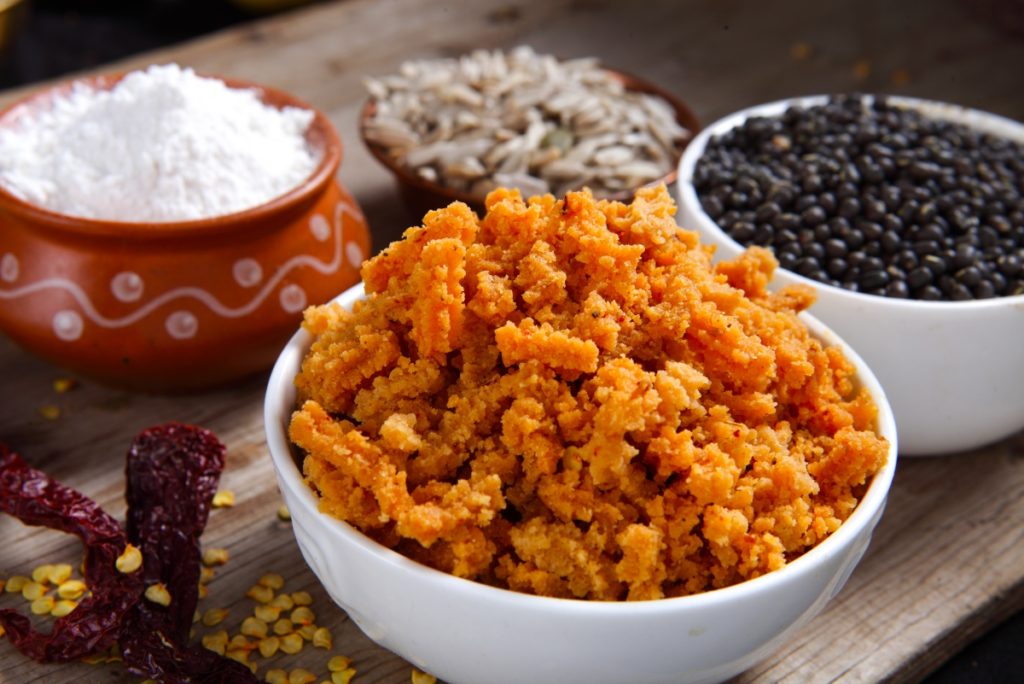
That is the beauty of snacks like namak para, mathri, and chakodi. In simple words, they’re easy and ready to eat. As a kid, I would just walk into the kitchen with a Barbie in one hand, and walk out with a wrist full of Murukkus, like bracelets, that I could munch on while I made my Barbie strut around in her heels. As I grew up, I moved from Barbies to books, but my snack didn’t change. It was a bit too spicy for me back then, but you know what they say: are you really having fun with your food if the spice doesn’t make your tongue numb?
You could say I was a cleanliness freak, requiring all my books to be neat and without any smear of food or drink. (This habit comes in handy even now, while I handle papers of actual importance.) And my perfect, spicy spiral came to my rescue yet again. It was not big enough to fit my wrist anymore, but the taste brought back the same warmth and love of my Dadima, and it continued being the best snack ever for me.
As I grew older, I moved to Delhi for my studies for just a year, and though I did not have home-cooked food there, I would take kilograms of Murukku with me. It was slightly excessive, but nothing can replace homemade food, right? I did find another person who made authentic Murukku and sold it from her home, and that was life-changing for me. The taste was almost the same, and you could feel the care that went in making it.
I tried learning how to make Murukkus from my mom and aunt, and it turned out pretty well too. But I could never get it to be as delicious as my Dadima did. However, Murukkus are pretty simple to make and extremely experiment-worthy. The spice is one such factor that you can really go to town with. As a person who grew up in Andhra, I love my savory spice, and I’m going to help you relive your childhood memories with a simple process of making Murukkus, or rather Chakodis.
You only need rice flour, moong dal, ghee, cumin seeds, chili powder, salt, and water to make the dough. Then you knead it and roll it into a rope-like shape. Take a piece of it and join the two edges, making a small circle with it. Do it for the entire dough. Fry it in oil, and voila! You have some delicious, homemade Murukku to snack on while you read our other blogs!
Want to buy some Murukku? Go right here !
Namak Paras: My Hostel Mates
The aftermath of a vacation is filled with sadness and sentiments. Packing all the ironed clothes in stacks and ticking the checklist typed in the Memo of my phone. Going back to the hostel after a warm and comfortable stay at home makes me lousy. The smile on my face often gets clouded with a frown. The constant grimace on my face penetrates deep within my mother’s heart and she makes sure to make or bake some snacks for me so that I can vouch on them till my homesickness fades away at Hostel.
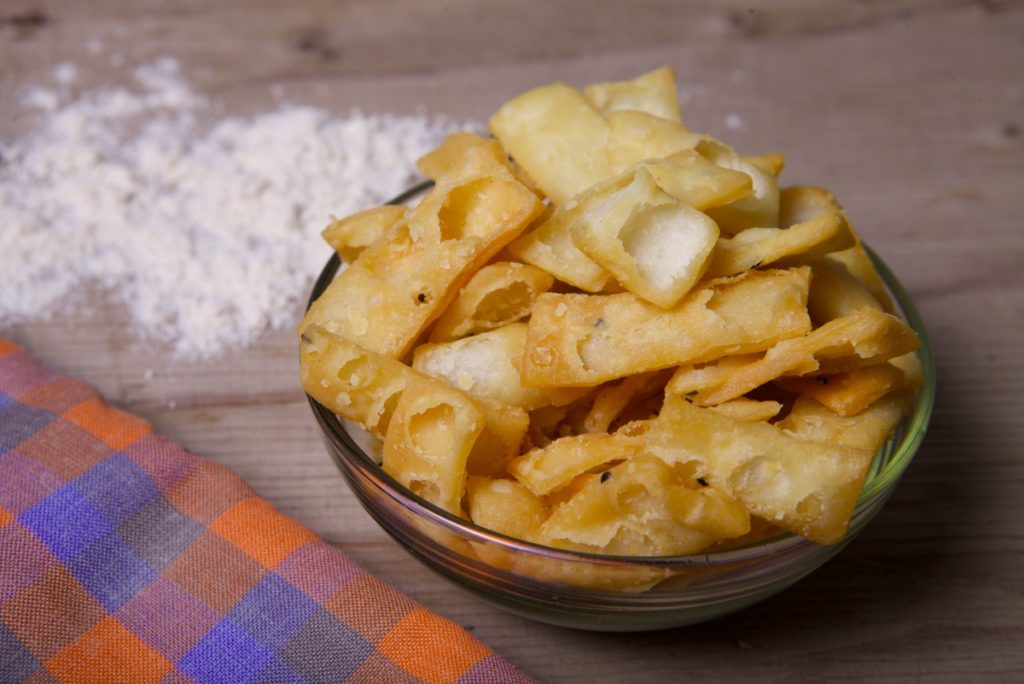
My mother’s cookbook has got a plethora of recipes. But there are two of them which always trail on to my backpack, every time I set for my hostel. That is Namak para. This is an Indian snack which is a true appetizer for chumming up your cravings. Namak para is a readily accessible snack in almost every state of India. The people of Punjab and Uttar Pradesh also refer to it as Mathris. In our Odia household, we call it Gaja or Nimki. Namak para is basically ribbon-shaped strips sliced into bite-sized pieces. However, it is also prepared in the shape of folded triangles and in an uneven rounded up tart.
Namak para is effortlessly available in the market, however, it is an easy recipe to try your hands-on at home. This crisp savory snack is a treat to assert for. Although most of the deep-fried eateries turn out to be greasy, however, these frangible nibbles stay crispy for days long. It is a great assortment to serve your guests with a cup of tea. The ajwain and kalonji zest makes it more flavorsome. The best part about Nimki is that it hardly takes a few hours to garner plates. It can be preserved in air-tight containers for days together to nibble upon with a cup of evening tea. Namak para takes just five ingredients to serve on.
INGREDIENTS NEEDED
- All-purpose flour or Maida (2 cups or around 500gm)
- Carom seeds or Ajwain (1 tablespoon)
- Caraway seeds or Kalonji (1 tablespoon)
- Ghee or oil (3-4 tablespoon)
- Salt (1 tablespoon or as per preference)
- Lukewarm water (As needed)
- ½ liter of Ghee or Oil to deep fry.
THE MAKING OF NAMAK PARAS
- Take around 2 cups or 500gm of All-purpose flour or what we call Maida.
- Add around 1 tablespoon of Ajwain or Carom seeds. It is not necessary to use Ajwain. Nimkis can be made without Ajwain also.
- To it, you can add another tablespoon of Caraway seeds or Kalonji. This is a must ingredient, gives the namak paras an authentic flavour.
- Then slightly heat up around 3-4 tablespoon of Ghee or oil and add to the mixture.
- Combine the ingredients all together.
- Take some lukewarm water and knead a semi-stiff dough out of the mixture. Make sure that the dough is not too soft and not to stiff.
- Cover the dough with a wet cloth and let it rest for around 30minutes.
- After 30mintues are done, take out the wet cloth, knead the dough for about a minute and make two to three balls out of it.
- Take each ball and roll them over until the edges are equal just like a Tawa paratha.
- Take a knife and cut the flattened dough into diamond-shaped pieces.
- Then heat up around ½ litre of oil or ghee in a Kadhai or frying pan. After the oil is hot enough, carefully drop in the diamond-shaped cut pieces of the dough.
- Keep the flame in medium and fry the nimkis until they have bulged up in size and their colour is changed to the lightest shade of brown.
- Take the nimkis out in a sheet of tissue and let them cool down for around 15minutes.
- Your crispy and flaky Namk paras are ready to munch up your cravings.
I just made some hot cup of ginger tea and placed some flaky Namak Paras in a plate. I am all set to have some awesome evening conversation along with my family. These Namak paras make them more flavorsome. When are you making yours?

Neemki
Neemki is this homemade crispy snacks that you can have with a cup of chai while watching saas bahu episode with your amma or while playing carrom with your brother or while gossiping with papa! This Neemki can lighten up any conversations and moments. Time for some chai pe charcha? Go get some Neemki 🙂
One small step for ChewDa, one giant leap for us
I am stealing Neil Armstrong’s quote because it aptly expresses how we, at ChewDa, are feeling today. With everyone investing in “AI” and “tech” startups, we, at ChewDa, felt like our knocks for mentorship and funding were falling on deaf doors. After many many applications, finally, someone felt that we were the milk to their honey. I stumbled upon Global Alliance for Mass Entrepreneurship(G.A.M.E) through Facebook. Like always, I wrote the application hoping for the best, though we were not expecting them to even look at our application. However, I got a shocker when I got a call from them, asking for a pitch deck, followed by a call for an interview. I was, obviously not prepared for these things to happen! G.A.M.E was looking to fund enterprises just like ChewDa that employs and supports women, sells indigenous and agricultural products, and has the potential to grow from micro-enterprise to a mass employer.
Out of 600 applications, ChewDa was among the top 15 winners. This validation was extremely important for us at ChewDa. With rejections everywhere and every day, we were almost doubting if our idea is even a good idea. However, this win has given us the courage to move forward with conviction. Today, we believe in our idea of women-centric business more than ever. This win was one small step towards our dream and one giant leap in our belief.
We were honored to be listed in an article published by yourStory, which you can read here : https://yourstory.com/2020/04/15-women-entrepreneurs-bengaluru-fb-industry
